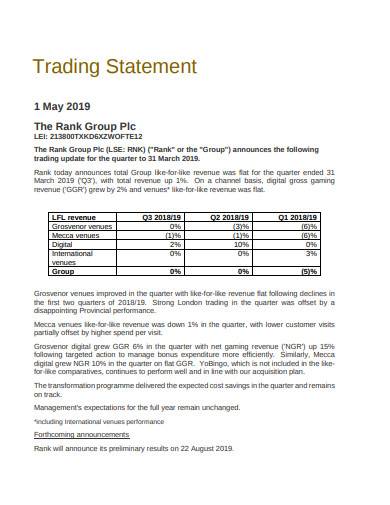Options trading, a complex and strategic investment avenue, presents unique tax implications that can impact your overall financial picture. Understanding your options trading tax statement is crucial to ensuring accurate reporting and maximizing your tax advantage. This detailed guide will empower you with the knowledge to navigate the complexities of your tax statement, confidently file your returns, and optimize your tax strategy.

Image: www.financialsamurai.com
Purpose and Significance of Options Trading Tax Statements
The tax statement for options trading serves as a comprehensive record of all your trading activities and their associated tax consequences. It aids you in determining your taxable income and calculating the amount of taxes you owe. The statement accurately reflects your gains, losses, premiums received or paid, and any other relevant information pertaining to your options trading endeavors. Understanding this document is essential for compliance with tax obligations and maximizing your tax benefits.
Breaking Down Your Options Trading Tax Statement
Your options trading tax statement is an intricate document, but with a systematic approach, you can comprehend its various sections and extract meaningful information.
Section 1: Personal Information and Account Overview
This initial section contains your personal information, such as your name, address, and Social Security number, along with details of your trading account, including the account number and type of account.
Section 2: Transaction Details
This section serves as a chronological record of all your options trading transactions. It provides crucial information such as the trade date, underlying security, type of option (call or put), strike price, and expiration date. Additionally, it includes details of the premium paid or received and the quantity of contracts traded.
Section 3: Taxable Income Calculation
This section summarizes the overall financial outcome of your options trading activities. It quantifies your total gains and losses and applies relevant tax codes to determine your taxable income from options trading.
Section 4: Premium Payment Details
For premiums paid on purchased options, this section provides a breakdown of the specific premium amounts allocated to each type of option contract. This information is crucial for calculating your cost basis in the options.
Section 5: Other Information
This section may include additional details such as adjustments, wash sales, and any other information that is relevant to your options trading account and tax calculations.
Key Tax Implications to Watch For
As you delve into your options trading tax statement, it’s crucial to be aware of the following key tax implications:
1. Taxable Events: Recognize that gains and losses from options trading are generally taxable as ordinary income or capital gains/losses.
2. Premium Payments: Premiums paid when purchasing options are treated as capital expenses, while premiums received from selling options are taxable as ordinary income.
3. Option Assignment: When an option contract is assigned, it triggers a taxable event that may result in a capital gain or loss.
4. Wash Sales: Wash sale rules apply to options trading, which means losses may be disallowed if you acquire substantially identical options within 30 days of selling a losing position.
5. Expired Options: Unexercised options that expire worthless generally result in a capital loss.

Image: www.pinterest.com
Maximizing Tax Benefits in Options Trading
Strategic tax planning is essential to make the most of your options trading activities. Here are some valuable tips to consider:
1. Holding Period: Holding options for more than 1 year can qualify them for favorable long-term capital gains tax rates.
2. Premium Structuring: Structuring premiums wisely can optimize your tax outcome. Consider selling covered calls to generate premium income and mitigate potential losses.
3. Tax-Advantaged Accounts: Trading options within tax-advantaged accounts, such as IRAs or 401(k)s, can shield your gains from immediate taxation.
What Does A Persons Options Trading Tax Statement Show

Image: www.sampletemplates.com
Conclusion
Understanding your options trading tax statement is an integral part of managing your financial affairs and ensuring tax compliance. By deciphering the various components of this document, you can confidently determine your taxable income, optimize your tax strategy, and maximize your investment returns. Remember, staying informed about tax implications and seeking professional guidance when needed can empower you to navigate the complexities of options trading and make the most of your investment opportunities.






